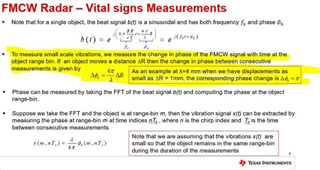Hello,
I am working on Automotive toolbox 3-2-0
I got no answer in this thread: Why there is no noticeable change in phase of Inhale and Breathing in Occupancy and Vital Signs
I am figuring out the Vital signs example output, but I found that phase of Inhale rate 1 - 2 and Heart rate 1 - 2 didn't change when occupancy is detected the (Inhale and breathing rates) only changes but have the same phase, there is no difference between before and after occupancy detected in the heatmap.
Q1. I need to know what's the phase depends on? is it depends on the speed of breathing?
Q2. second question is I want to know what's "a.u" of displacement stands for?



